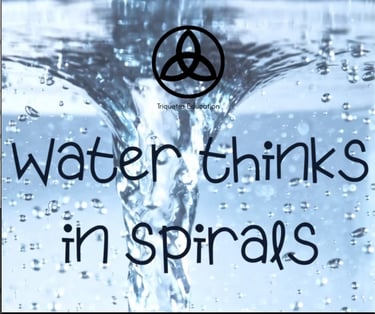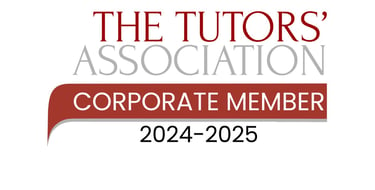Thinking about Thinking
Water Thinks in Spirals, But Who Doesn't.
10/16/20252 min read


Let’s say that you believe that water is alive. We’ll join the ranks of great thinkers like Viktor Schauberger (an Austrian inventor and philosopher 1885-1958) who believed that water was a living entity with its own energetic life force, or James Lovelock (a British scientist, 1919- 2022) who saw water as one of the living planet’s regulatory systems, acting like the bloodstream of a living organism.
If water is alive, then it learns. And we see that it reflects light, adapts to shape, and finds the most efficient path downhill. It is never still, even when it rests in pools, slowly and patiently wearing away the banks. Water is always aware of gravity and form, and it is always conscious of its own actions, place and momentum.
Water is a powerful metaphor of metacognition in nature: it is more than just motion itself, it is the awareness of motion, and the shifting and alteration of paths and behaviour based on results.
In education, metacognition is the same principle; it is the awareness of our own thought processes. It’s what separates ‘doing’ from ‘understanding doing.’ Students who ‘do’ just get the task completed. They will often rush through pieces of work, and they will forget to engage with purpose and strategies of what they are doing. They are prone to making the same mistakes repeatedly,, and they might even find themselves stuck at a particular level, frustrated that they no longer seem to be improving.
Students who think metacognitively don’t do this. They take their time and consider the task critically, choosing effective strategies to answer questions or extrapolate topics. Modern neuroscience even locates this ‘awareness of awareness’ in the brain: the anterior prefrontal cortex — the site of reflection, planning, and insight — lights up when we monitor our own thinking (Fleming & Dolan, 2012) (1). These students know why they answered questions or wrote essays in a particular way, and, when they receive feedback, they assimilate it and understand how to use it to improve next time. Students at this level might even create less work than those who don’t engage metacognitively, but they achieve higher results. Research by the Education Endowment Foundation shows that students explicitly taught to think about their own thinking make, on average, eight months’ additional progress per year (2). In fact, metacognitive awareness doesn’t only enhance grades; it builds self-efficacy, resilience, and motivation, the psychological architecture of long-term success (Dignath & Büttner, 2008)(3); the explicit teaching of metacognitive strategies enhances performance across every subject area, reinforcing that no subject stands alone when students learn how to learn.(Hattie, 2009 (4)).
Metacognition is mental reflection beneath the surface: students learn to see their own learning, understand their mental currents, and shape them with intent. When students engage at a metacognitive level, every subject is a mirror, and every student, a changing surface, learning to see themselves more clearly each time.
(1) Fleming, S. M. and Dolan, R. J. (2012) ‘The neural basis of metacognitive ability’, Trends in Cognitive Sciences, 16(8), pp. 351–360. doi: 10.1016/j.tics.2012.04.009.
(2) Education Endowment Foundation (2018) Metacognition and self-regulated learning: Guidance report. Education Endowment Foundation. Available at: https://educationendowmentfoundation.org.uk/education-evidence/guidance-reports/metacognition (Accessed: 16/10/2025).
(3) Dignath, C. and Büttner, G. (2008) ‘Components of fostering self-regulated learning among students: A meta-analysis on intervention studies at primary and secondary school level’, Metacognition and Learning, 3(3), pp. 231–264. doi: 10.1007/s11409-008-9029-2.
(4) Hattie, J. (2009) Visible learning: A synthesis of over 800 meta-analyses relating to achievement. London: Routledge.




